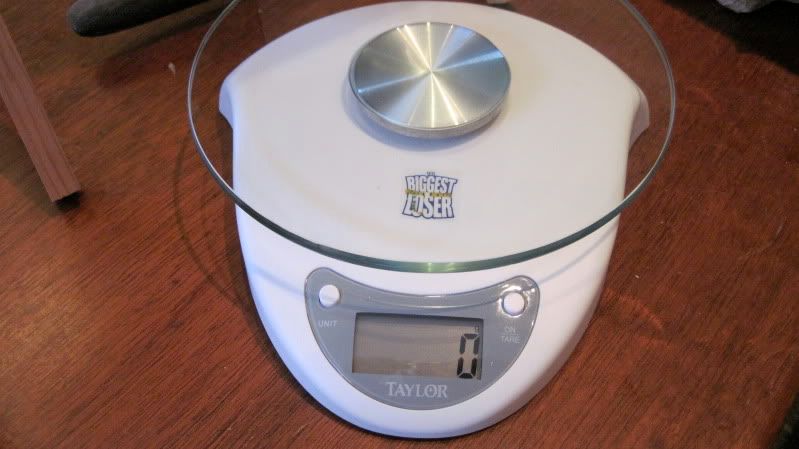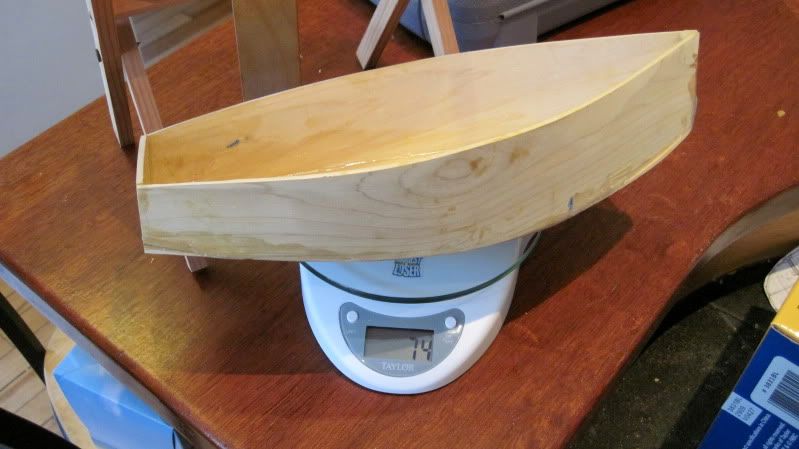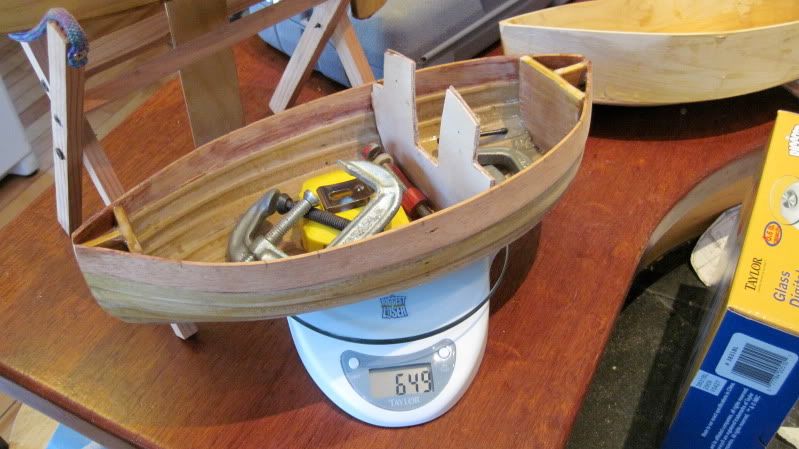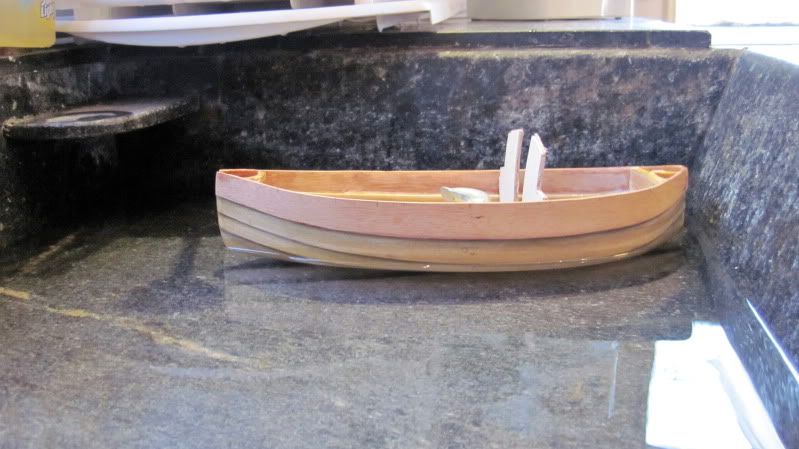Okay - Wibur and all, there seems to be some belief that the “educated folks” are in some mad dash to make the lightest boat ever. Light weight is better to a certain point (less immersed surface (read drag) = quicker acceleration, less wave making resistance, less mass to push downwind, etc.) but when you go too far then all the desirable aspects drop away. Too light and tacking becomes more difficult in any wind over ghosting, the boat won’t coast at all when the wind drops which leaves you in the same place with no wind, and a new breeze will likely blow the bow away from the wind before the boat begins to accelerate.
What the “experts” are really after is the best ballast-to-overall weight ratio that they can build. The object is to get the positive qualities and sail carrying (read tall, high lift rig here) that high performance classes like the M Class have, and to get there means striving for a similar ballast-to-weight ratio. Most new builders, and many experienced ones, overbuild their Footies. What Moonshadow illustrated is that those ballast ratios are achievable and that the forces acting on a Footy don’t require massive internal structure. Moonshadow is stripped down to the bare bones, everything that is not absolutely required is left out. I call it “just enough” building, and to build like that requires rebooting how one thinks about boat building.
All that said, I’m not sure that Moonshadow is the template for future Footies, just a weathervane. Yes, she won the EuroGP going away, but that happens sometimes and it sure helps to have a top flight skipper at the helm. Prior to that race though Moonshadow wasn’t doing all that well. Granted she was initially powered by several experimental rig configurations which is not the best idea when testing a new design (too many variables to tell what is helping and what is hurting), but in the GP she sported a correct looking, relatively high aspect ratio rig with a very nice sail.
Which brings me to my real point, the boat is not the major determinant of performance, the sail(s) are. Yes, a good ballast-to-weight ratio is important but if your sails are not up to par it won’t matter much. My friend, Scott Spacie, the current American Champion and the dominant Footy sailor in the NY/New England area, has worked out the magic behind McRig construction. He can plug any of his rigs into any one of his sizable fleet of Footies (some dating back 5 years or so) and all anyone sees of his boat is the stern. Now, rigs aren’t as sexy as hulls, but they are the engine that powers the craft and are as deserving of one’s attention, as much, and perhaps more so than the hull. A great rig on an average boat is preferable to a great boat with a crappy rig.
Which brings us back to Steven. I like Earl’s suggestion, its a bit of slight of hand but it seems workable provided you find a cloth that is non-absorbing. Something like cheese cloth (or other cotton fabric) would droop if it got wet and not fill well. As with all the other aspects of the Eun Na Mara project there will be a lot of wrinkles to work out before the boat sails around the course in style, but Steven, now that you’ve gotten us all involved we expect to see some shots of her on the water soon.

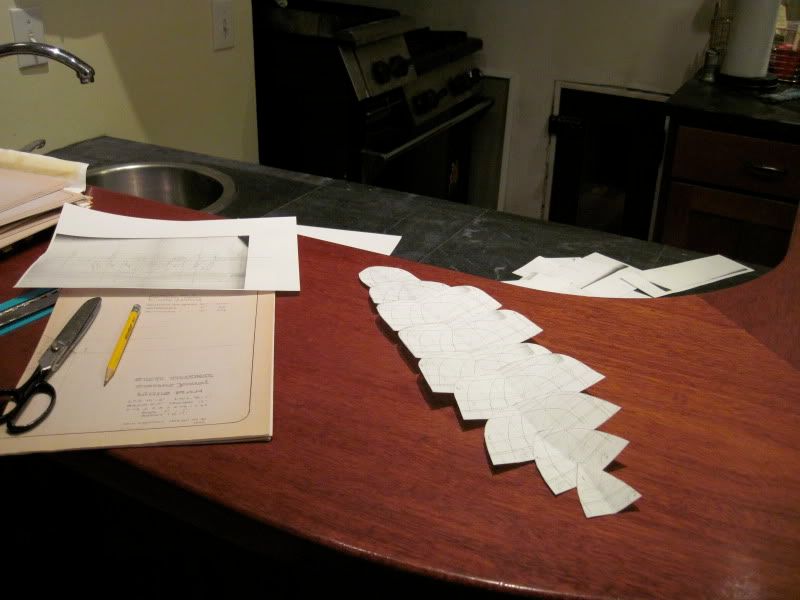

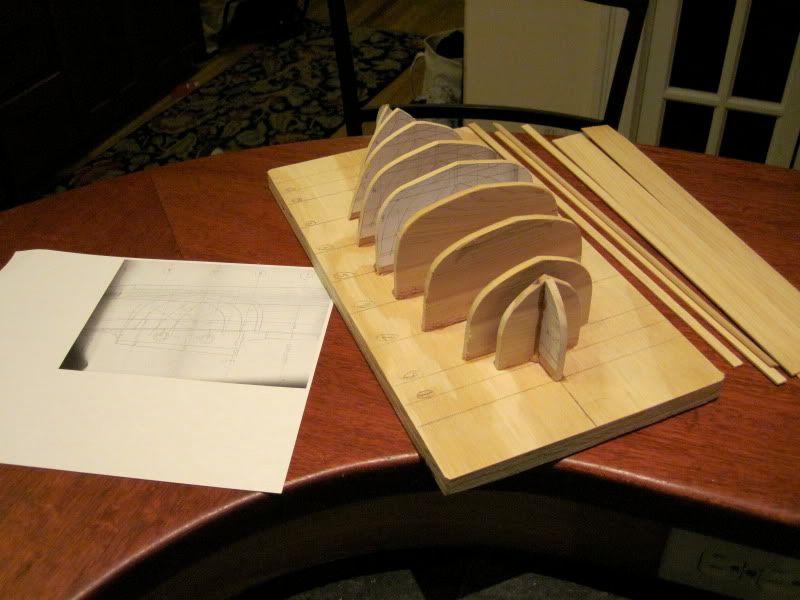
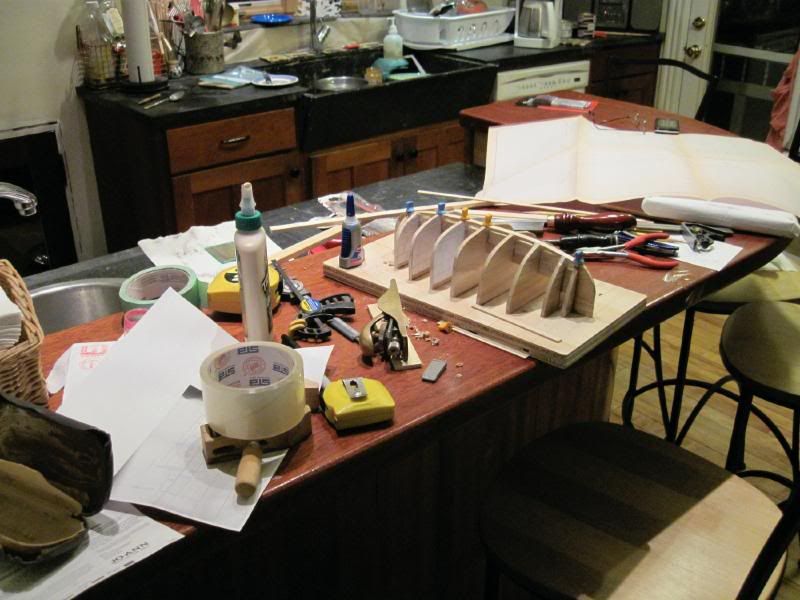
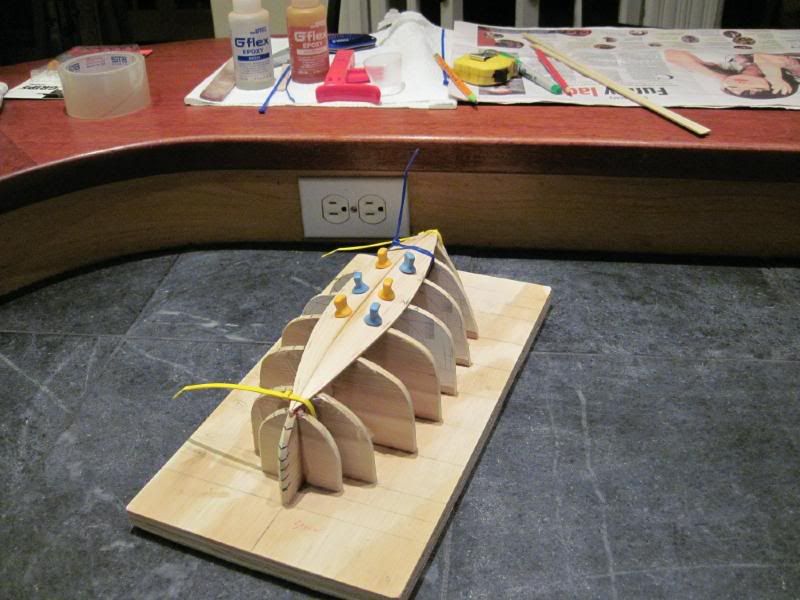

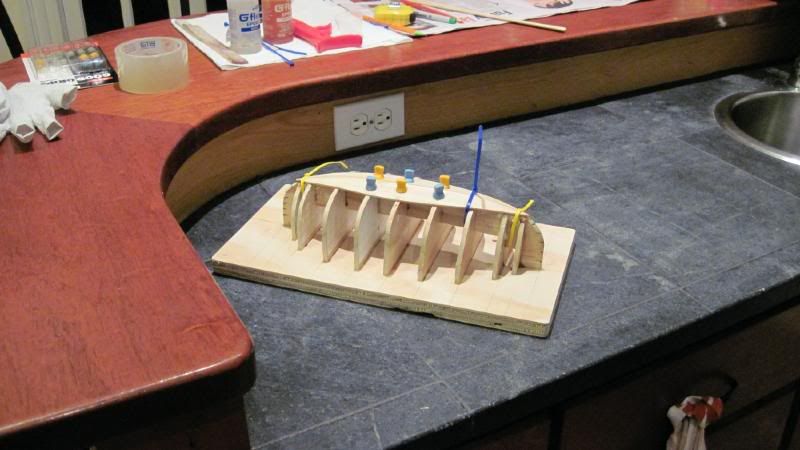
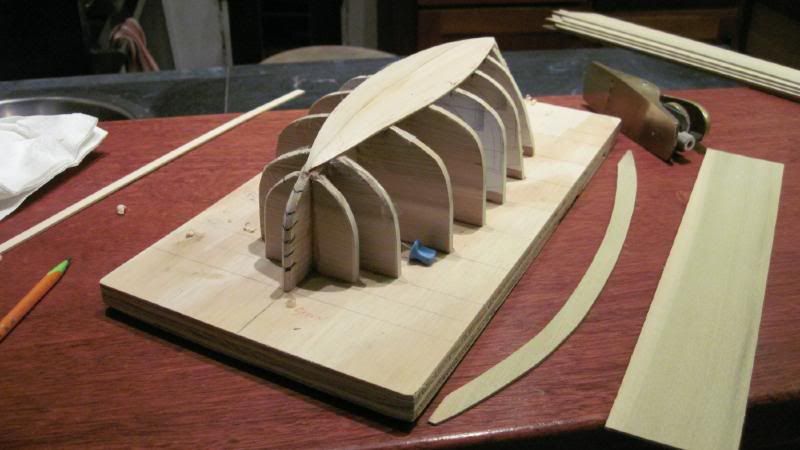
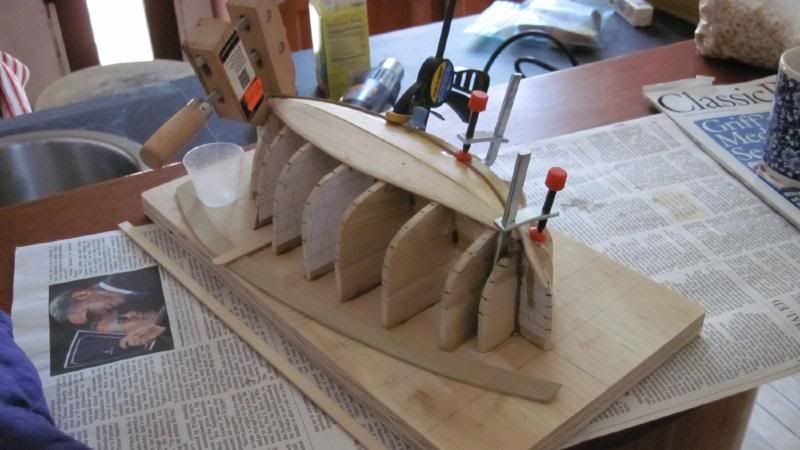
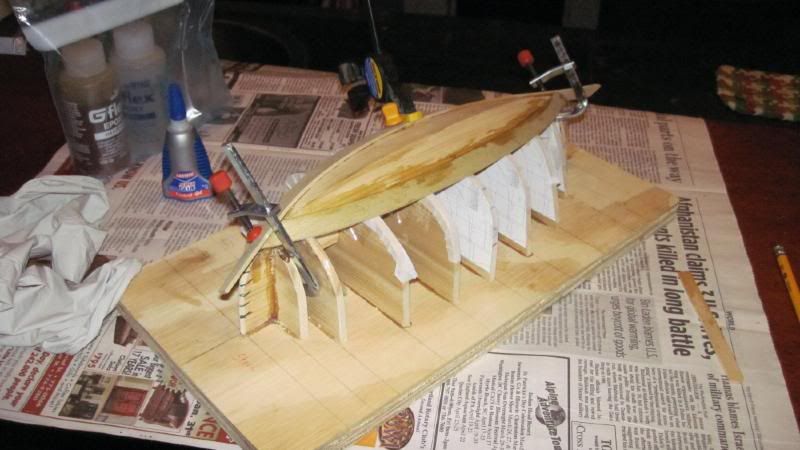
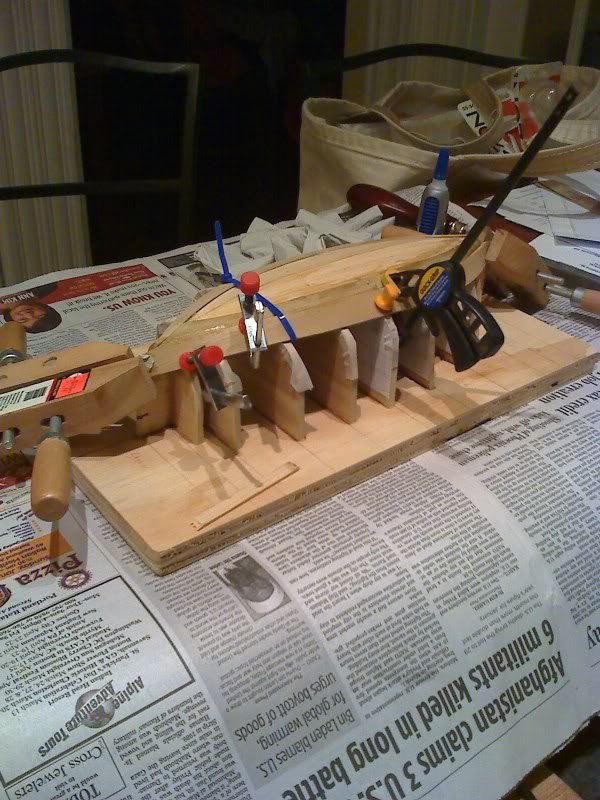
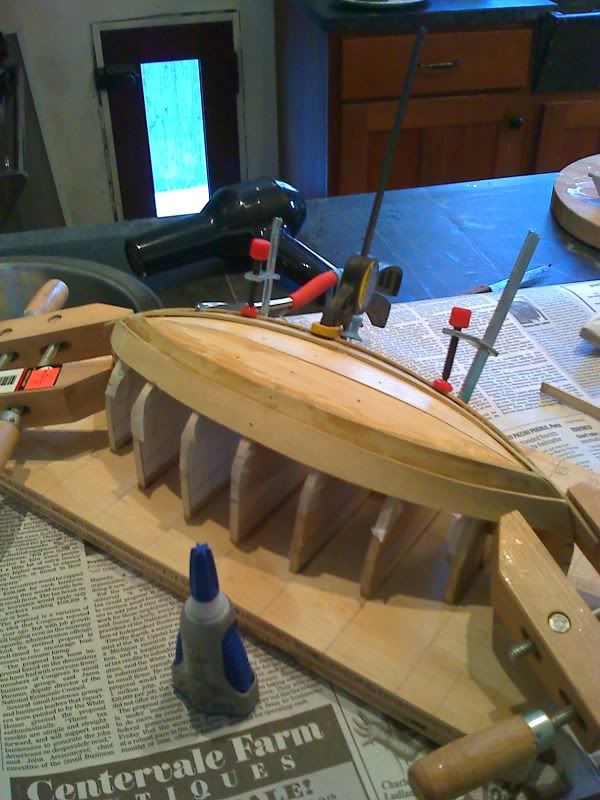
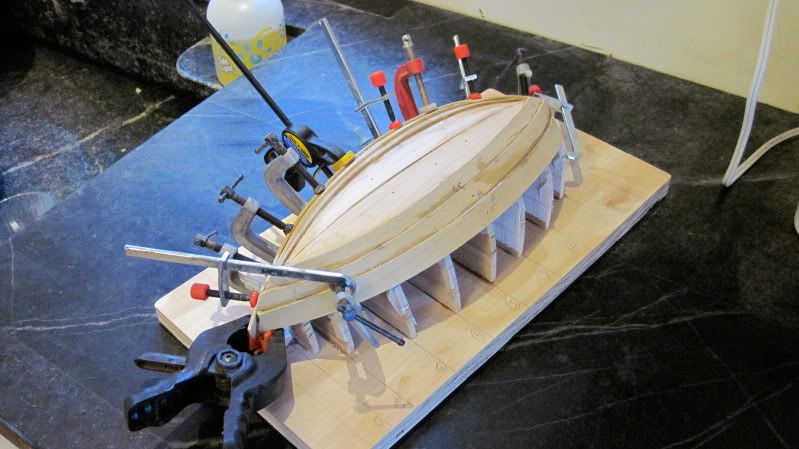

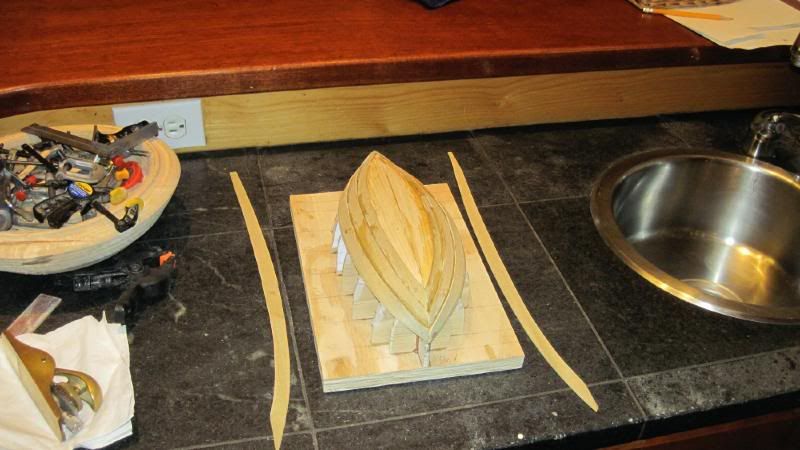
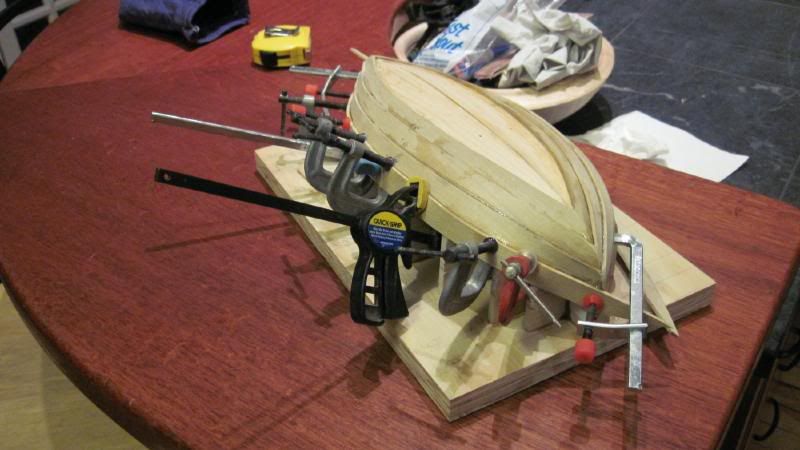
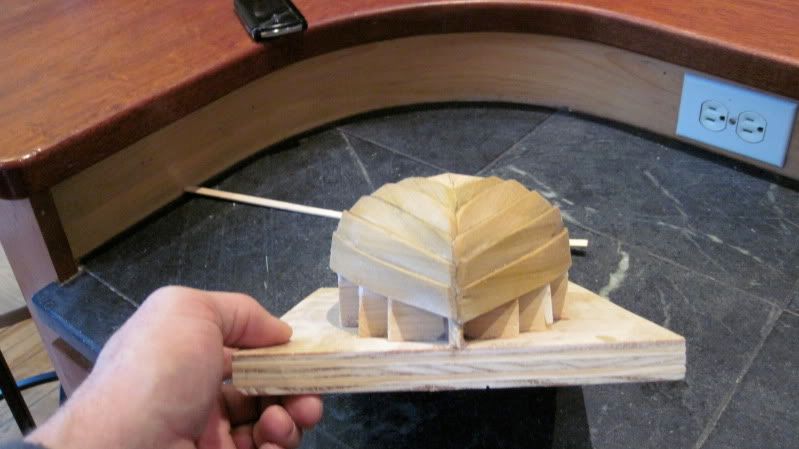

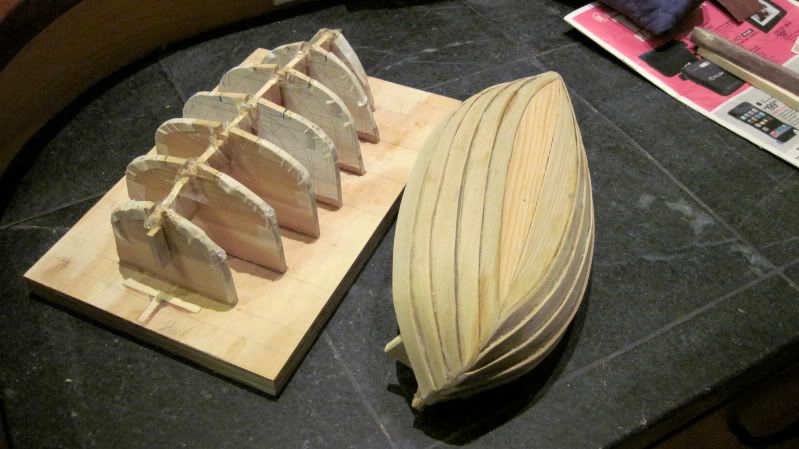
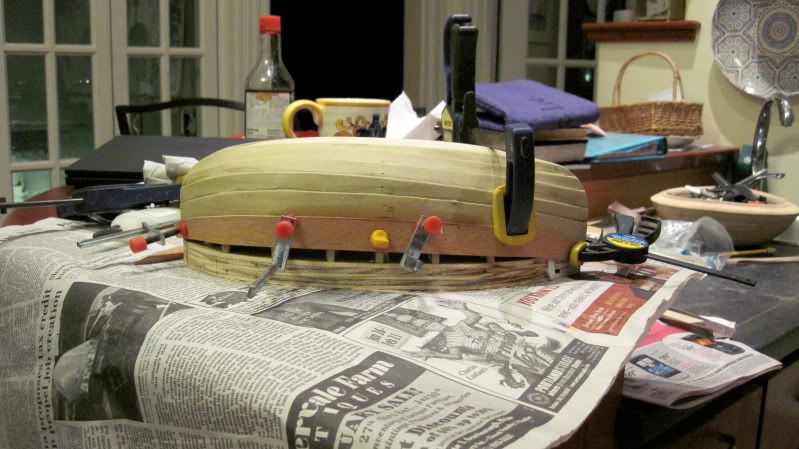

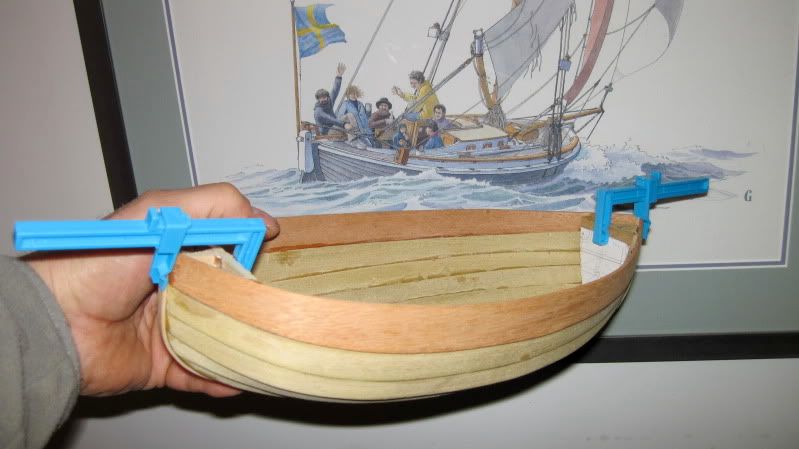
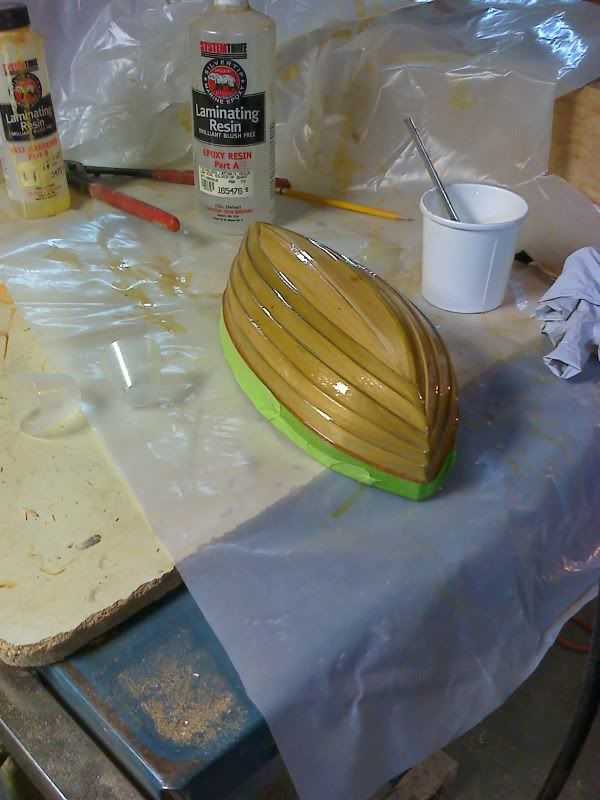
 I don’t know where to start so I’ll just jump in. I’m definitely not trying to build a high performance boat. I just want to make it around the course in style. I’m planning on using a standard footy keel. I’m thinking of the boat as a caricature of the original boat. The rig will be scaled to fit. The Razor I brought to Mystic last year was planked in 1/8" cedar. I didn’t weigh that hull but I have another bare hull that I built back then but never finished. I’ll weigh that one tomorrow.
I don’t know where to start so I’ll just jump in. I’m definitely not trying to build a high performance boat. I just want to make it around the course in style. I’m planning on using a standard footy keel. I’m thinking of the boat as a caricature of the original boat. The rig will be scaled to fit. The Razor I brought to Mystic last year was planked in 1/8" cedar. I didn’t weigh that hull but I have another bare hull that I built back then but never finished. I’ll weigh that one tomorrow.
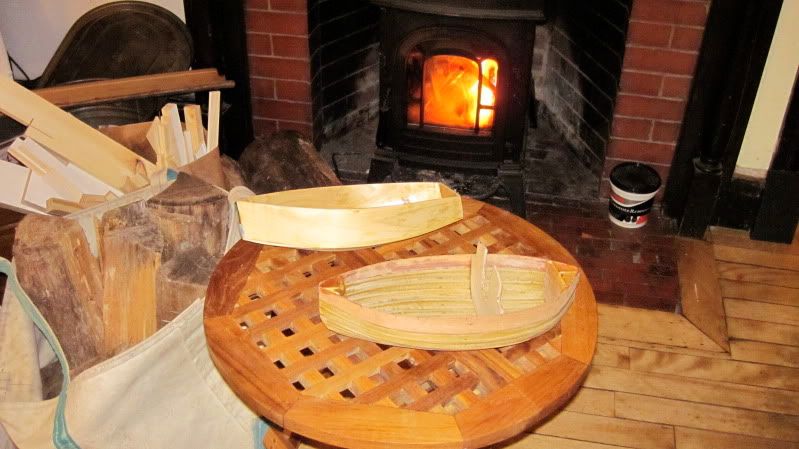
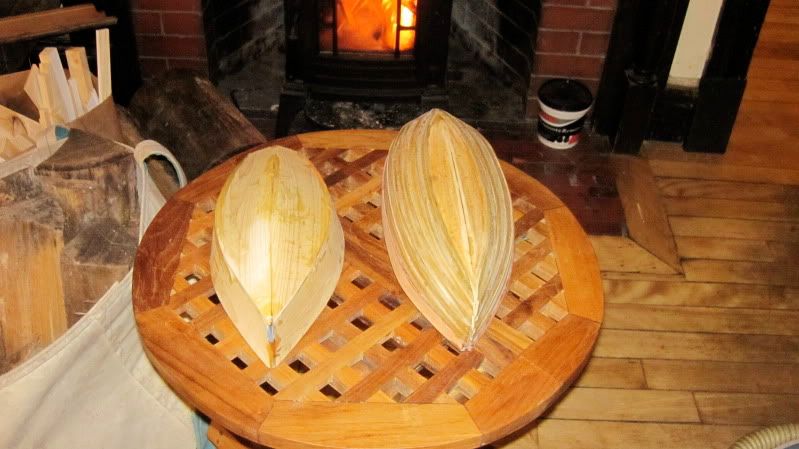
 You never know, I just might take the “Spirit Of Tradition” class.
You never know, I just might take the “Spirit Of Tradition” class. 
